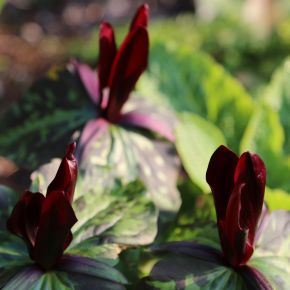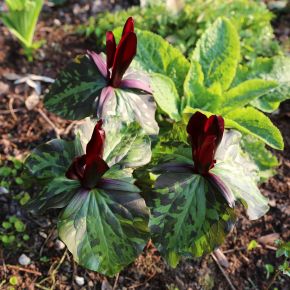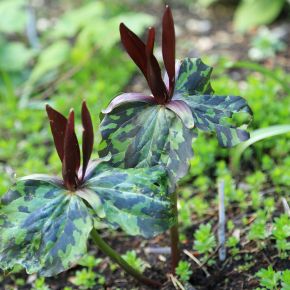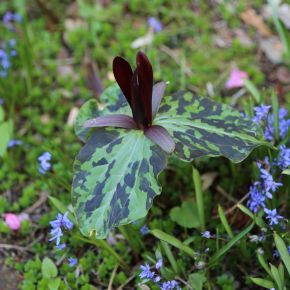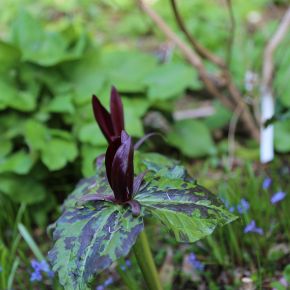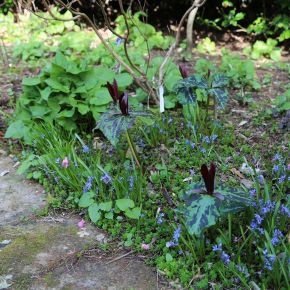Trillium kurabayashii
Family - Melianthiaceae
Category - Perennial
Origin - California, Oregon USA
Discovered By - Discovered by M. Kurabayashi, first described by J. Freeman
Season of Interest - Spring, Summer
Hardiness - H4
Height - up to 50cm
Width - 30cm
Location - The Woodland Walk
Description: A clump-forming Perennial with an upright habit. Three large, ovate leaves are mid-green and heavily mottled with maroon to deep purple. The leaves are held in a whorl at the top of each stem. Cup-shaped flowers are composed of three glossy, maroon to deep purple petals and three sepals of a similar colour that develop a green hue with age. The flowers are produced one per stem from early to late spring.
Trillium kurabayashii was first discovered by Masataka Kurabayashi, a Japanese scientist who worked with the genus. John D. Freeman, a plantsman, confirmed it as a separate species and was the first to describe it in literature. He named the plant in honour of Masataka Kurabayashi.
Flower:
Fragrant, cup-shaped flowers have three upright, narrow petals and three upright sepals that reflex as the flower ages. The petals and sepals are maroon to deep purple, the sepals develop a green hue with age. The flowers are produced one per stem from March into May.
Flower colour: Maroon, purple
Flower shape: Solitary, cup-shaped flowers
Flowering time: March, April, May
Foliage:
Three ovate to rounded leaves are held in a whorl at the top of each stem. The leaves are mid-green and heavily mottled with maroon to deep purple.
Foliage Senescence: Deciduous
Foliage Shape: Ovate to rounded
Poison Information:
Toxic if ingested.
Propagation:
Division, seed.
Cultivation:
Best in partial shade to shade in fertile, moisture retentive soil that is well drained. Trillium will perform best in a soil that is neutral to acidic.
